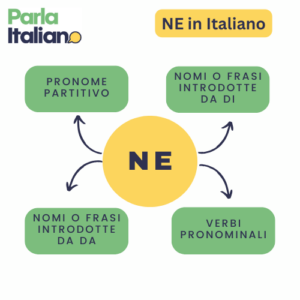In this blog we will discuss and answer:
- Why listening to spoken Italian is so difficult
- Why a change of expectation can make it easier for you
- What is passive listening
- What is active listening
- 6 techniques to practise with
- What content to choose
It is usual for students of Italian to find that understanding the spoken language is difficult, more difficult than for example reading. This is correct because there are several elements typical of the spoken language, such as blending words together, filler words, dropped or added sounds – to name just a few – that makes the spoken language more complex to decipher.
Having said that, in my experience, it is the expectations and attitudes that are detrimental to developing this skill and makes it more difficult. The first misleading expectation I am talking about is the idea that one should understand everything. This is the expectation of listening, as if listening to their native language.
Based on this belief, when full comprehension is not achieved, there is a tendency of doubting ones’ own abilities, feeling inadequate and this can affect their motivation. Nevertheless, this can be easily adjusted.
First, start with a different attitude. Imaging that the piece you are listing to is a mystery and you are the detective. Your role is to piece together the puzzle bit by bit.
There are several types of listening that one can do. They have different objectives and degrees of effectiveness.
Passive listening
One is passive listening. This is when you are listening to something in Italian while doing something else. Perhaps driving the car or doing chores in the house. This kind of listening does not engage the brain fully, so little is processed by it. Consequently, this type does not significantly improve your skills. Having said that any listening activity that we do has benefits, in this case to familiarize the ear to the music of the language, the intonation, the stress, and so on.
Active listening
Active listening is done when focusing on the audio and in most cases with a specific task in mind. This is the type of listening that will help you improve your understanding of spoken Italian, and it is the type of listening that we do in our classes.

6 techniques to help you practise and improve comprehension.
- The detective
Put on your detective cap and start by gathering information. What is the audio/video going to be about? Is there a title, a picture, or any other piece of content that can offer some clues?
Knowing the subject or just having an idea of what the listening is about has the power to lower the brain stress response so that it is more receptive.
In everyday life, in our mother tongue, it is typical to know what the context of the conversation is and there are many clues for the listeners to predict the conversation. So, preparing for your listening should be equivalent of acquiring the same knowledge as in your mother tongue.
- The language shower and the puzzle
For short listening, a useful technique is to first listen to the whole piece. Relax in the process, without expectation to understand, as if it is a warm shower of words.
After this stage, listen again, this time try to capture what might be the key words. At beginners level, just capturing a handful of words would be considered a success.
Now pause the listening and start putting those words together as if they were puzzle pieces. How do they fit together?
As an example, imagine we are listening to a dialogue in a coffee shop. As the context is a situation we have been in before, can we predict the content? The key words will help doing just that. In this case the key words might be: caffè, latte, cornetto (coffee, milk, croissant). Write those words down. It won’t be difficult to understand that someone is making an order at the coffee shop.
Listen again and try to identify more words around the ones you already understand. Continue the process, writing down more words. This technique allows for a gradual increase in comprehension, building your confidence in the process.
You might think that this type of conversation is easy, however, it depends on the level and the technique can be applied to more challenging pieces.
- Reading/listening
Another interesting technique is to get hold of the transcript of what you are about to hear and read along while listening.
Get a highlighter ready and mark on the script anything that is a surprise to you. For example: how a word is pronounced or stressed, how a group of words are uttered together rather than separately, and so on.
This technique will allow you to notice how Italians actually speak and therefore, recognise the same patterns in real life when in Italy.
- Make a summary
A great tool when practising listening is to listen once, pause and try to sum up, saying aloud what has been said. Listen again to build up comprehension and repeat aloud once more adding or revising your summary. If something does not make sense, focus on that part and listen again until you get a bit more clarity.
This technique is best done with a partner as the exchange helps increasing comprehension and it is more motivating. It also develops speaking.
- Transcribe it
Another technique is to transcribe what you hear. This seems similar to some of the previous techniques, however, in this case the focus is on the individual words. How does this technique work?
Select a short audio piece at your level – not too difficult, not too easy. Listen to it from start to finish. Then listen again to the first few seconds. Pause, transcribe what has been said. Don’t worry about making mistakes or leaving gaps. If you know that there are a couple of words that you don’t understand, leave two gaps. Keep pausing and transcribing the whole piece. When you finish, look at your document. From the context and from what you have understood, can you predict what to put in the gaps? Complete as much as you can in pencil then listen again. Were you able to add anything more?
Transcribing is a powerful tool as it allows you to focus on the details of the language.
- Shadow reading
This technique is appropriate for intermediate and advanced students. For this technique you’ll need a short audio/video clip (max 5 minutes, better if less). This technique is not about repeating but more about echoing what you hear and it is great for picking up the music of the language, for becoming aware of the natural flow and rhythm. Therefore, don’t worry too much about understanding every word.
How does it work?
First listen to the whole recording or video, make sure you understand generally what it is about. There is no need to understand everything completely. Then, listen to one sentence, pause, and repeat a couple of times. As you shadow, focus upon matching speed, intonation and sound and echo what you hear in the same way as it is said. When your sentence sounds good, go on to the next. Keep working till you reach the end of the audio. At the end you should be able to speak at the same speed as the speaker. Keep this activity short and use an audio/video clip about something that you enjoy.
What content to listen to
We’ve just looked at some techniques for developing your understanding of spoken Italian but what content should you listen to?
This should be based on your level so that it should not be too difficult, nor too easy, just slightly above your current level. You should be able to understand quite a bit but still feel challenged. So if you understand between 60% to 80%, that is great.
What to listen to depends on your interest, think of what you would like to listen to in your own language and select something similar. For example, as I was doing some research for this blog I decided to listen to some French to put myself in your shoes (or per mettermi nei vostri panni). So, at the moment I am interested in meditation and the effects that this has on our day to day life, so I did a search on this topic and selected a podcast. If I wanted an elementary or lower intermediate video I would have selected for example a video on gardening and if I wanted a beginner level video, I would have selected a cartoon or a video made for children.
Youtube is a great source of content, but there are also podcasts, online radio, films and tv series.
Establish a routine
As for anything, understanding spoken Italian is all about practice, so decide what your routine is and stick to it. Make it easy for you by choosing audio and video clips that are varied and interesting to keep your motivation going. Change around the techniques that you use, experiment with new ones. All of the above has been selected so that you can practise at home.
Enrol in an Italian class
However, if time is not on your side, you can enrol in a class. Our professional teachers are trained to develop listening. They establish a relaxed atmosphere in class. They select listening content and activities at the right level for our students and use a number of techniques for developing this skill. The exchange between the group of peers in class is an added bonus.
Conclusions
In conclusion:
- Understand that listening to spoken Italian is more difficult than reading
- Don’t expect to understand everything
- Passive listening can be helpful but do not rely on it alone
- Active listening and doing the work is where the magic happens
- Be a detective and put the puzzle together
- Choose material that you understand at least 60% to 80%
- Listen to something you enjoy
- Establish a routine
- Use a variety of techniques to keep your routine interesting
- If you do not have time to research listening and need motivation to practise, enrol in a good class







